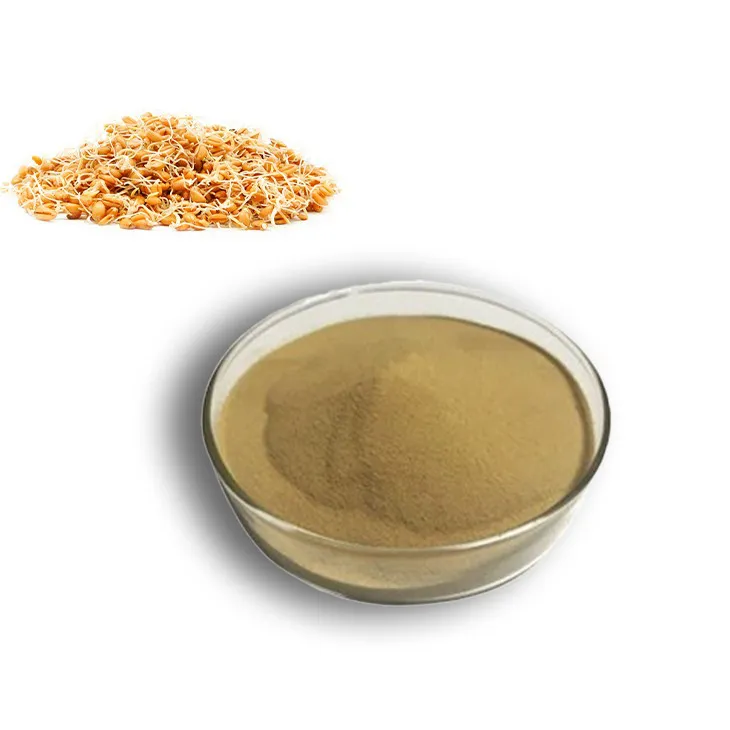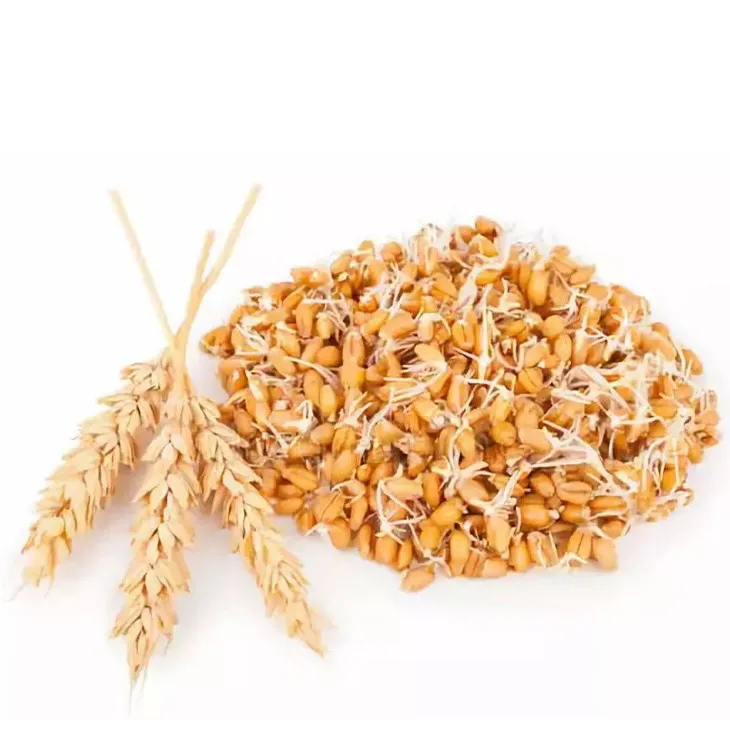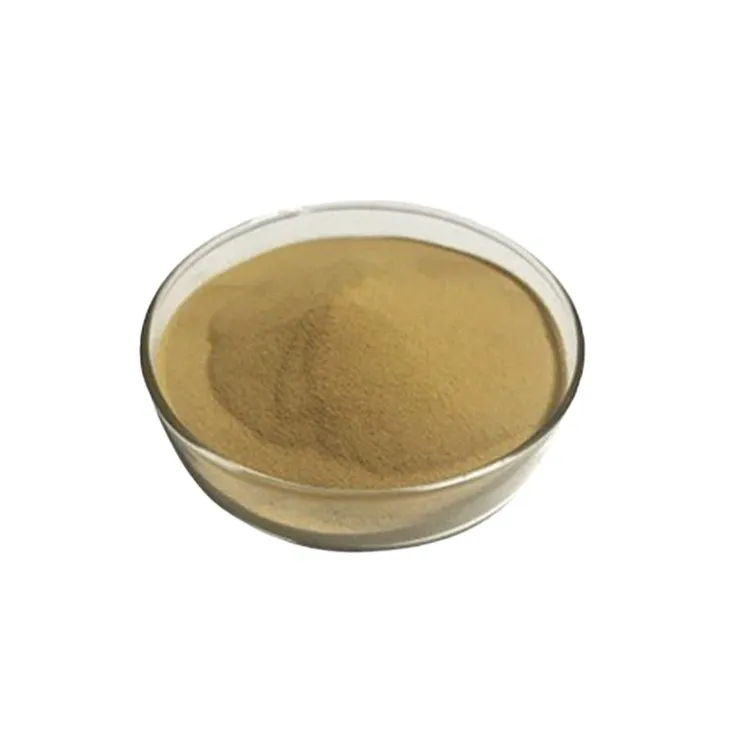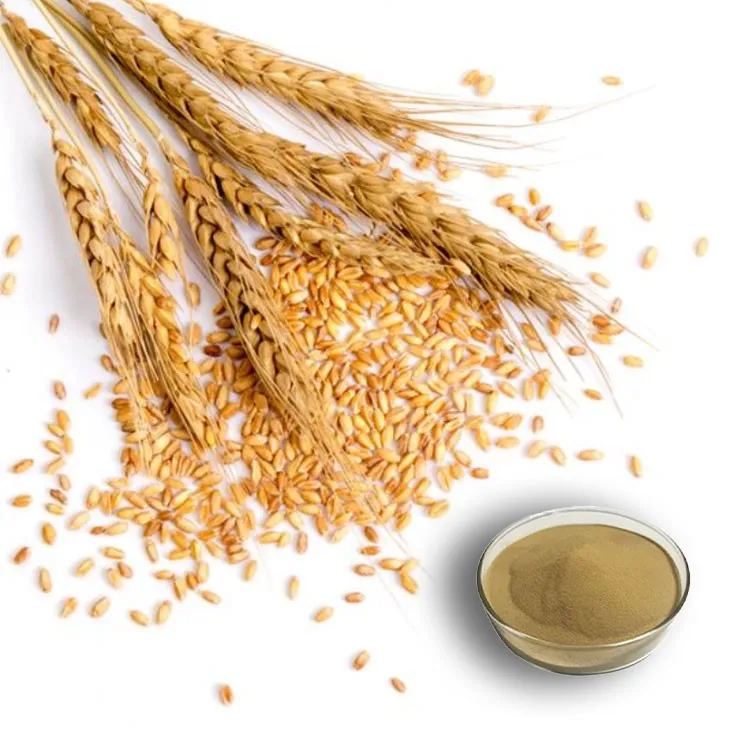- 0086-571-85302990
- sales@greenskybio.com
Wheat germ extract can reduce high blood pressure.
2024-11-14

Introduction
Hypertension, or high blood pressure, is a major global health concern. It is a significant risk factor for various cardiovascular diseases, including heart attacks, strokes, and heart failure. The search for effective and natural remedies to manage hypertension has been an area of extensive research. Wheat Germ Extract has recently emerged as a potential candidate in this regard. Wheat germ is the embryo of the wheat kernel and is rich in a variety of nutrients. The extract obtained from it contains numerous bioactive compounds that may offer beneficial effects on blood pressure regulation.

Bioactive Compounds in Wheat Germ Extract
Vitamins
Wheat Germ Extract is a rich source of vitamins. Vitamin E, in particular, is present in significant amounts. Vitamin E is a powerful antioxidant that helps protect the cells from oxidative stress. In the context of blood pressure, oxidative stress can damage the endothelial cells lining the blood vessels. By reducing oxidative stress, vitamin E in wheat germ extract may contribute to the maintenance of normal endothelial function, which is crucial for proper blood pressure regulation.Minerals
It also contains minerals such as magnesium. Magnesium is involved in many physiological processes in the body, including the regulation of muscle and nerve function. In blood vessels, magnesium can cause relaxation of the smooth muscle cells. This relaxation can lead to vasodilation, or widening of the blood vessels, which in turn can lower blood pressure. Potassium is another important mineral present in wheat germ extract. Adequate potassium intake is associated with a reduction in blood pressure. It helps in counteracting the effects of sodium, which, when in excess, can increase blood pressure.Antioxidants
Besides vitamin E, wheat germ extract contains other antioxidants such as phenolic compounds. These antioxidants scavenge free radicals in the body. Free radicals can cause inflammation and oxidative damage in the blood vessels. By reducing this damage, the antioxidants in wheat germ extract may help in maintaining the integrity of the blood vessels and preventing the development of hypertension.
Mechanisms of Action on Blood Pressure
Effect on Blood Vessels' Function
The bioactive compounds in wheat germ extract can have a direct impact on the function of blood vessels. As mentioned earlier, magnesium promotes vasodilation. This occurs through its interaction with calcium channels in the smooth muscle cells of the blood vessels. When magnesium levels are sufficient, it inhibits the entry of calcium into these cells. Calcium is required for muscle contraction, so by reducing calcium entry, the smooth muscle cells relax, leading to wider blood vessels. The antioxidants in the extract also play a role in maintaining the health of the endothelial cells that line the blood vessels. A healthy endothelium releases substances such as nitric oxide, which is a potent vasodilator. If the endothelium is damaged, the production of nitric oxide can be reduced, leading to vasoconstriction and increased blood pressure. By protecting the endothelium, wheat germ extract helps to ensure normal nitric oxide production and proper blood vessel dilation.Improvement of Endothelial Health
Endothelial cells are not only important for vasodilation but also for other functions related to blood pressure regulation. They act as a barrier between the blood and the underlying tissues of the blood vessels. Wheat germ extract, through its antioxidant and nutrient content, can help to repair and maintain the health of endothelial cells. Oxidative stress and inflammation can damage the endothelium, and the antioxidants in the extract can neutralize free radicals and reduce inflammation. For example, phenolic compounds can inhibit the activation of inflammatory pathways in endothelial cells. Vitamin E can also prevent lipid peroxidation in the cell membranes of endothelial cells, which is a form of oxidative damage. By improving endothelial health, wheat germ extract can contribute to better blood pressure control.Modulation of Hormonal and Enzymatic Systems
The body has complex hormonal and enzymatic systems that are involved in blood pressure regulation. Wheat germ extract may interact with these systems. For instance, some of its components may affect the renin - angiotensin - aldosterone system (RAAS). This system plays a key role in regulating blood pressure. When blood pressure drops, the kidneys release renin, which then leads to the production of angiotensin II. Angiotensin II causes vasoconstriction and also stimulates the release of aldosterone, which promotes sodium and water retention, increasing blood volume and blood pressure. Wheat germ extract may contain substances that can modulate the activity of this system. It could potentially inhibit the production of renin or the action of angiotensin II, thereby reducing its hypertensive effects. Additionally, enzymes involved in blood pressure regulation, such as those related to the metabolism of nitric oxide, may also be affected by the compounds in wheat germ extract.
Studies on Wheat Germ Extract and Hypertension
Animal Studies
Several animal studies have been conducted to investigate the effects of wheat germ extract on blood pressure. In these studies, animals with induced hypertension were treated with wheat germ extract. The results have been quite promising. For example, in a study using rats with hypertension, those given wheat germ extract showed a significant reduction in blood pressure compared to the control group. The extract was found to improve endothelial function in the rats, as measured by increased nitric oxide production in the blood vessels. Another animal study focused on the role of wheat germ extract in modulating the RAAS. The results indicated that the extract could inhibit the activity of the RAAS in hypertensive animals, which contributed to the reduction in blood pressure.Human Studies
Although there are fewer human studies compared to animal studies at present, the available human studies also show some positive results. In a small - scale clinical trial, participants with mild to moderate hypertension were given wheat germ extract supplements for a certain period. After the treatment, a proportion of the participants showed a decrease in their blood pressure levels. However, more large - scale and long - term human studies are needed to further confirm the effectiveness of wheat germ extract in reducing human hypertension. One of the challenges in human studies is the variability in diet and lifestyle factors among participants, which can affect the results. Also, different formulations of wheat germ extract may have different bioavailabilities and potencies, which need to be carefully considered in future research.
Limitations and Future Directions
Limitations
While the potential of wheat germ extract in reducing high blood pressure is promising, there are some limitations to consider. First, the exact mechanisms of action are not fully understood. Although we have some knowledge about how the bioactive compounds in the extract may affect blood pressure, there are likely other mechanisms at play that have not been discovered yet. Second, the current research mainly focuses on in vitro and animal studies, and more human studies are required. As mentioned earlier, human studies are more complex due to factors such as individual differences in diet, lifestyle, and genetic makeup. Third, the quality and standardization of wheat germ extract products can vary widely. Different extraction methods and sources of wheat germ can result in extracts with different compositions and potencies. This makes it difficult to compare the results of different studies and to ensure the effectiveness and safety of the products in clinical applications.Future Directions
Future research should aim to address these limitations. More in - depth studies are needed to fully elucidate the mechanisms of action of wheat germ extract on blood pressure. This could involve exploring the interactions between different bioactive compounds in the extract and their combined effects on the body's physiological systems related to blood pressure regulation. In terms of human studies, large - scale, randomized, controlled trials are essential. These trials should be designed to account for the factors that can influence the results, such as diet and lifestyle. Standardization of wheat germ extract products is also crucial. This would involve establishing uniform extraction methods and quality control standards to ensure that the products used in research and clinical applications have consistent compositions and potencies. Additionally, research could explore the potential of combining wheat germ extract with other natural or conventional antihypertensive agents to enhance its effectiveness or reduce side effects.Conclusion
Wheat germ extract is a rich source of bioactive compounds such as vitamins, minerals, and antioxidants that may have beneficial effects on blood pressure regulation. The extract may act on blood vessels' function, improve endothelial health, and modulate hormonal and enzymatic systems related to blood pressure. Animal studies have shown promising results, and initial human studies also suggest its potential in reducing high blood pressure. However, more research is needed to fully understand its mechanisms of action and to confirm its effectiveness in humans. With further study and standardization, wheat germ extract may become an important natural remedy for hypertension in the future.
FAQ:
1. How does wheat germ extract affect blood vessels to reduce high blood pressure?
Wheat germ extract is rich in bioactive compounds. Some of these compounds may help relax the smooth muscles in blood vessel walls, which can lead to vasodilation. Vasodilation allows the blood vessels to widen, reducing the resistance to blood flow and thus helping to lower blood pressure.
2. What are the specific bioactive compounds in wheat germ extract that are beneficial for reducing high blood pressure?
It contains vitamins (such as vitamin E), minerals (like potassium), and antioxidants. Vitamin E has antioxidant properties that can protect blood vessels from oxidative stress. Potassium helps in regulating the balance of electrolytes in the body, which is crucial for normal blood pressure. Antioxidants can prevent damage to the endothelial cells lining the blood vessels, which is important for proper blood vessel function and blood pressure control.
3. Can wheat germ extract replace traditional hypertension medications?
At present, it cannot completely replace traditional hypertension medications. While wheat germ extract shows potential in reducing blood pressure, it is still considered a complementary approach. People with hypertension should always consult their doctors before making any changes to their treatment plans. Doctors need to monitor blood pressure closely and consider the overall health status of the patient.
4. How long does it take for wheat germ extract to show an effect on reducing high blood pressure?
The time it takes for wheat germ extract to show an effect on reducing blood pressure can vary from person to person. It depends on factors such as the individual's overall health, the severity of hypertension, and the dosage of the extract. Some studies suggest that it may take several weeks to a few months of consistent use to observe noticeable changes in blood pressure.
5. Are there any side effects associated with taking wheat germ extract for high blood pressure?
In general, when taken in appropriate amounts, wheat germ extract is considered safe for most people. However, some individuals may experience allergic reactions, especially those who are allergic to wheat. Also, if taken in excessive amounts, it may cause digestive problems such as nausea or diarrhea.
Related literature
- The Role of Wheat Germ in Cardiovascular Health"
- "Bioactive Compounds in Wheat Germ and Their Impact on Blood Pressure"
- "Potential of Wheat Germ Extract as an Antihypertensive Agent: A Review"
- ▶ Hesperidin
- ▶ Citrus Bioflavonoids
- ▶ Plant Extract
- ▶ lycopene
- ▶ Diosmin
- ▶ Grape seed extract
- ▶ Sea buckthorn Juice Powder
- ▶ Fruit Juice Powder
- ▶ Hops Extract
- ▶ Artichoke Extract
- ▶ Mushroom extract
- ▶ Astaxanthin
- ▶ Green Tea Extract
- ▶ Curcumin
- ▶ Horse Chestnut Extract
- ▶ Other Product
- ▶ Boswellia Serrata Extract
- ▶ Resveratrol
- ▶ Marigold Extract
- ▶ Grape Leaf Extract
- ▶ New Product
- ▶ Aminolevulinic acid
- ▶ Cranberry Extract
- ▶ Red Yeast Rice
- ▶ Red Wine Extract
-
Chasteberry Extract
2024-11-14
-
Thunder God Vine Extract
2024-11-14
-
Jujube Extract
2024-11-14
-
Gynostemma pentaphyllum extract
2024-11-14
-
Panax Ginseng Leaf Extract
2024-11-14
-
Garcinia Cambogia Extract
2024-11-14
-
Senna Leaf Extract
2024-11-14
-
Plantain extract
2024-11-14
-
American Ginseng Root Extract
2024-11-14
-
Mangosteen extract powder
2024-11-14





















